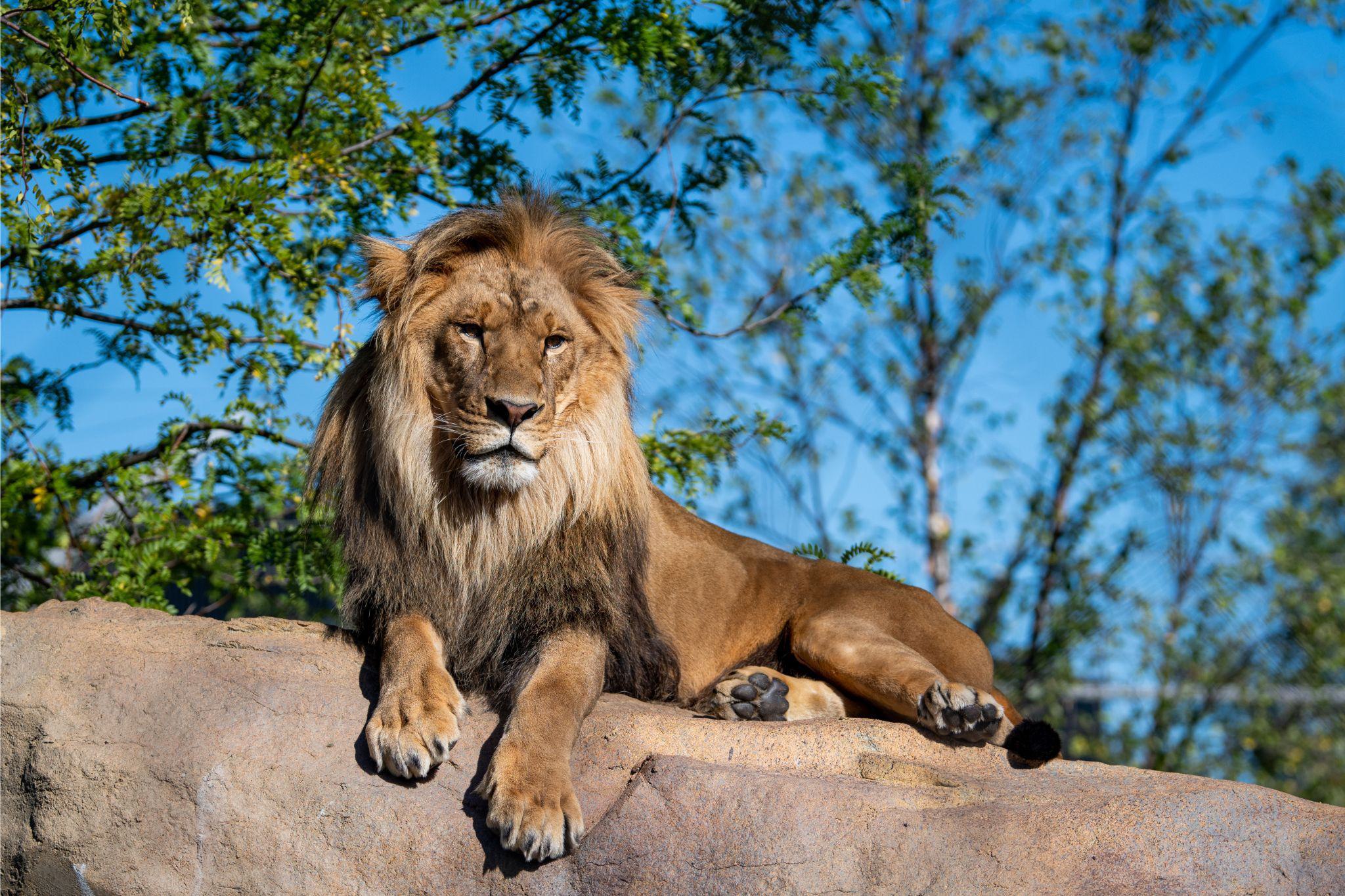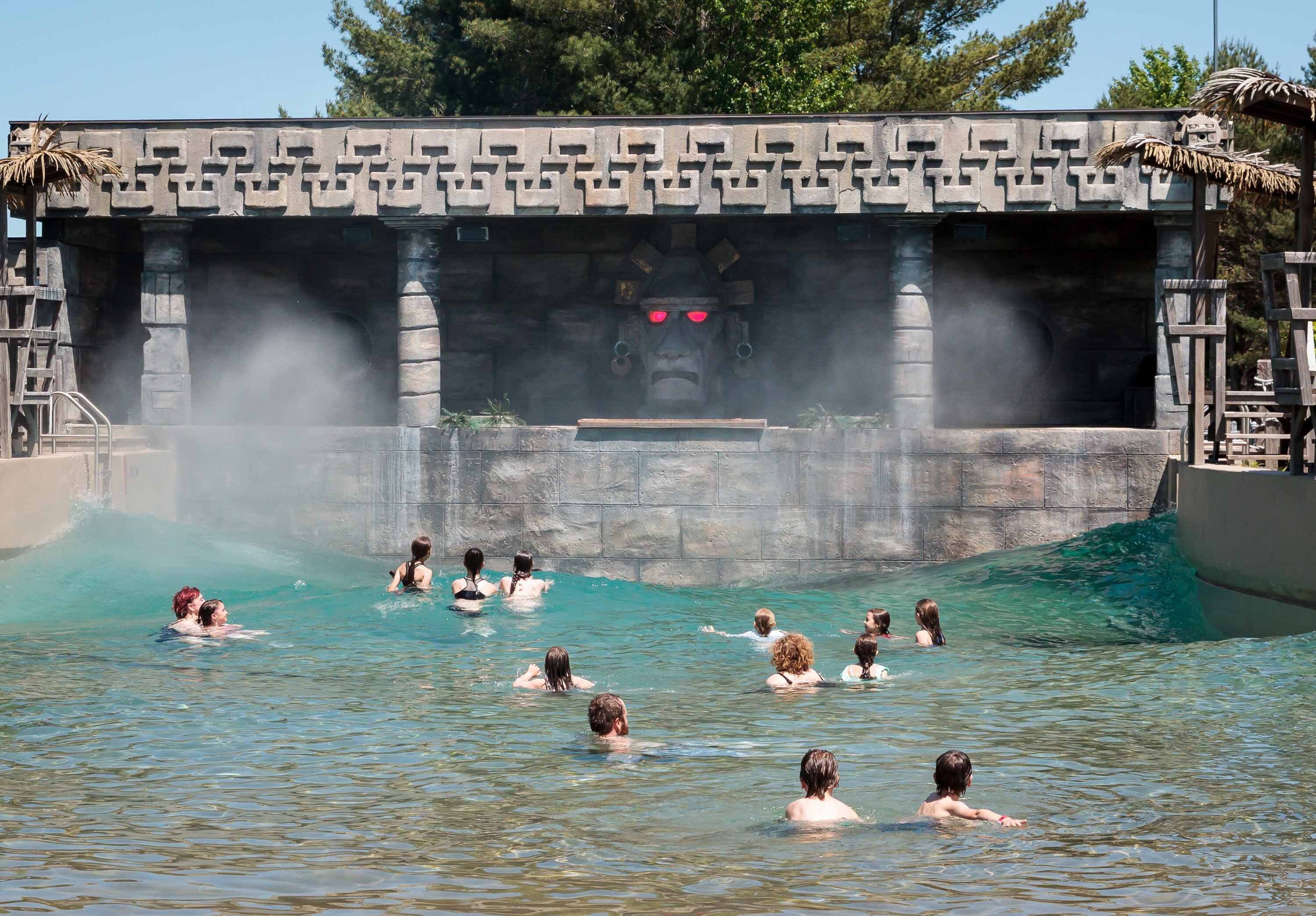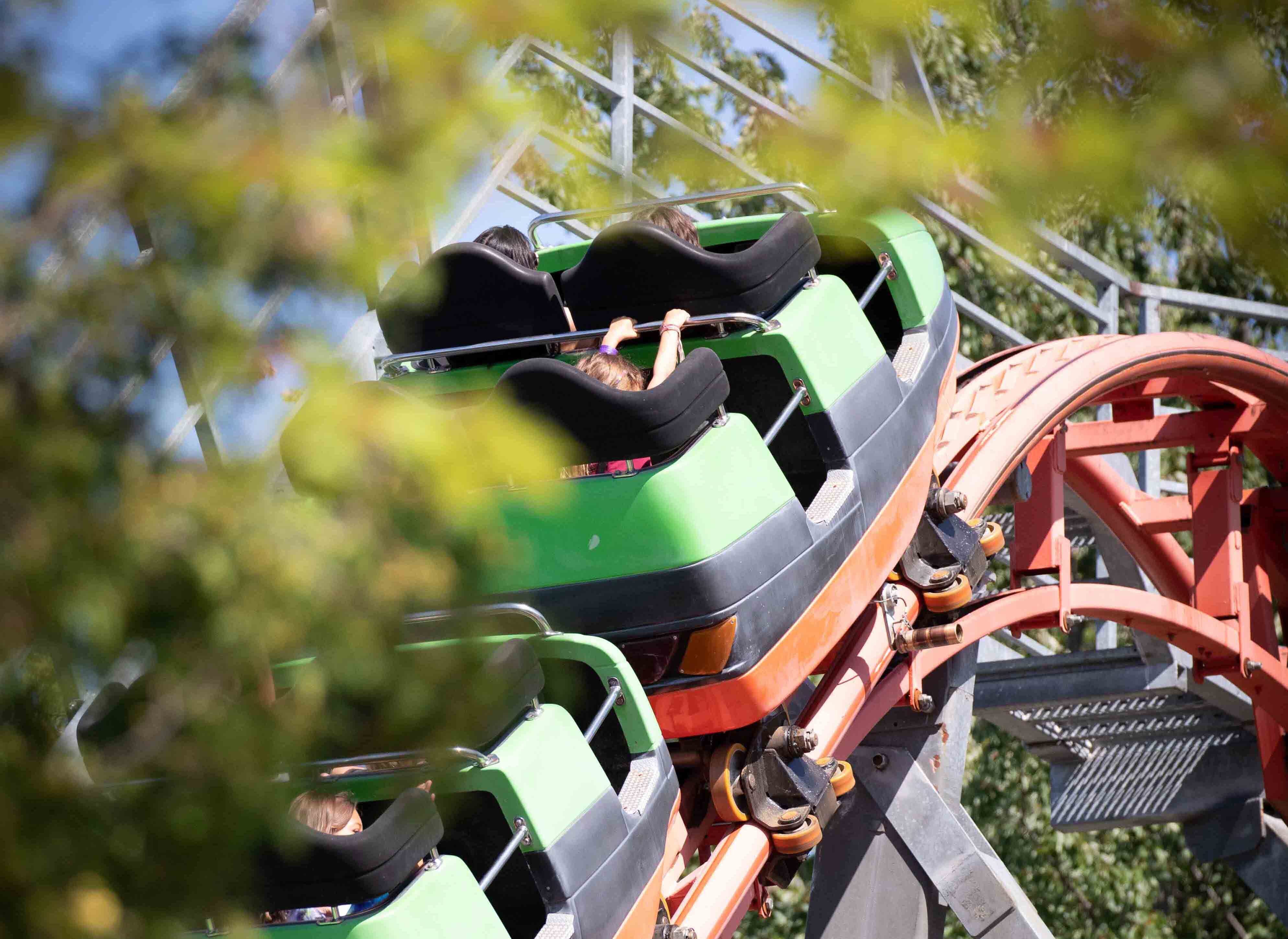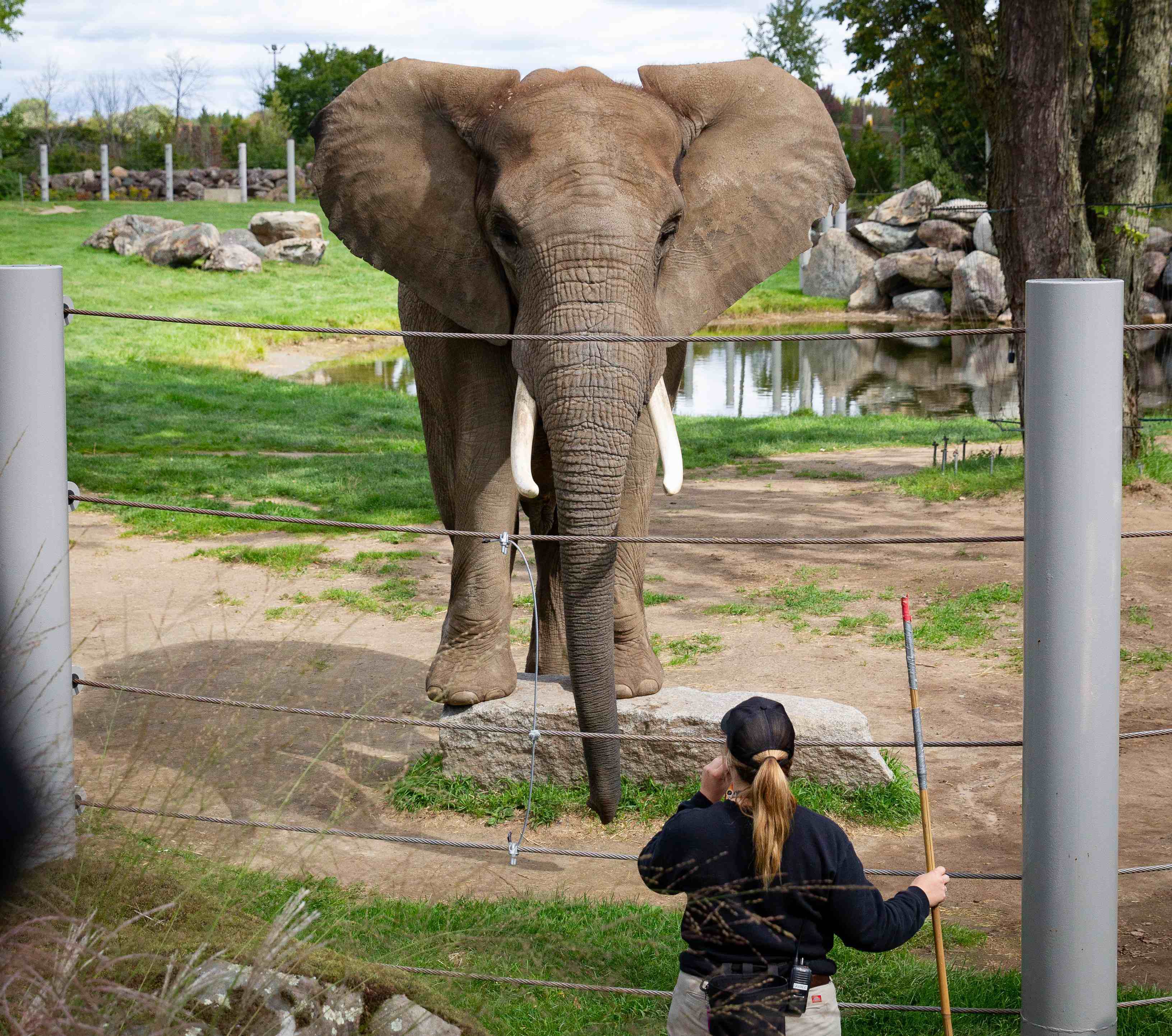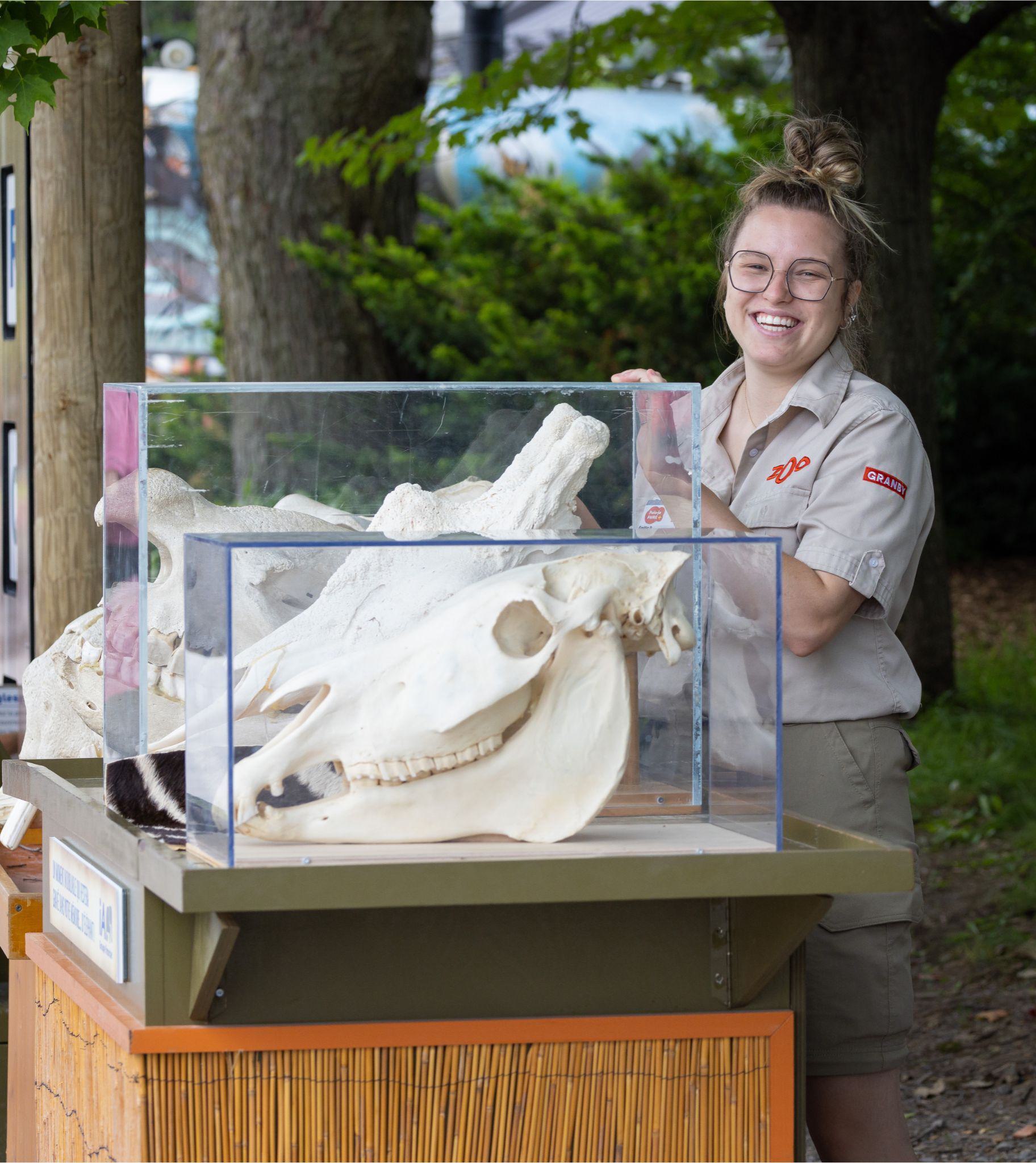<p>A flurry of activity between two seasons!</p>
A flurry of activity between two seasons!
The end of the summer vacation season signals a return to school, the start of the harvest season and apple pie! At the Zoo, the pathways left deserted by the public are now brought suddenly to life with a new frenzy! Indeed, the Zoo teams are busy preparing for the cold season.
For the horticulture, customer services, animal care and all the other specialized departments, the clock is ticking to get everything ready before the first snowflakes fall ... and it all starts with our precious residents!
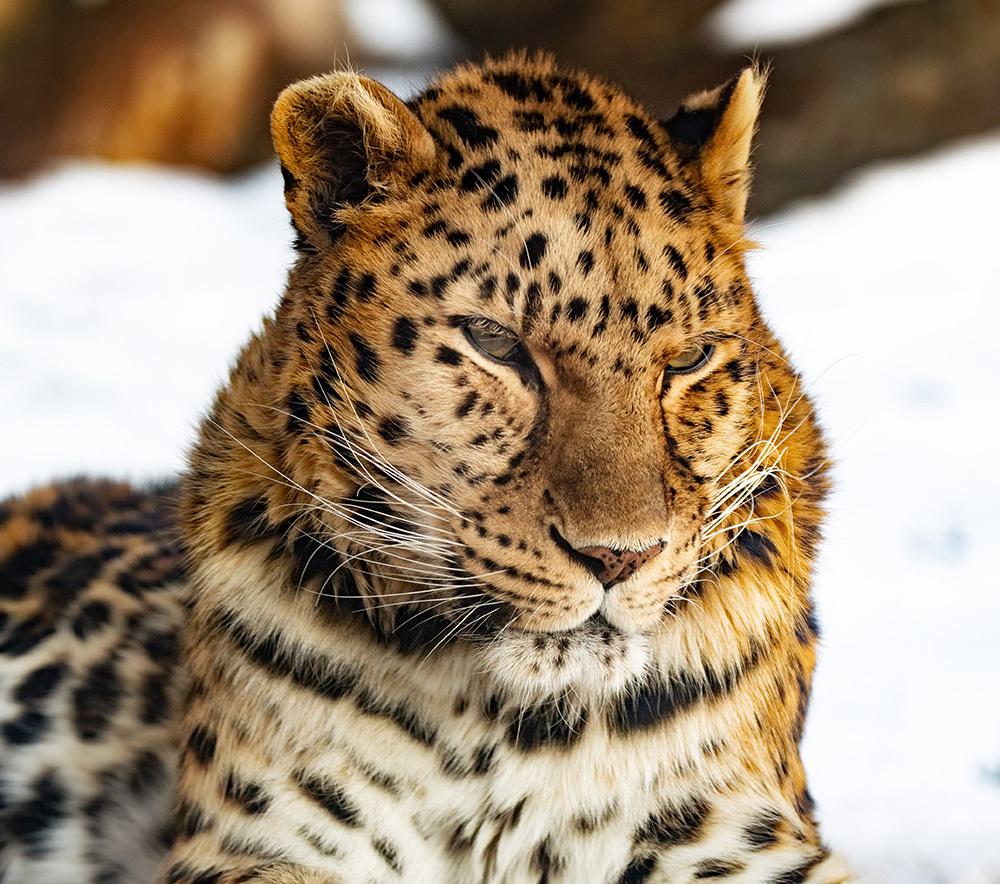

Adjusting to the Weather and a Change of Menu
The Zoo is home to over 1,300 animals from all around the world. Their relationship with snow and cold weather differs from one species to another. Therefore, we need to adapt our strategy to each animal species and allow more tolerant groups to develop the tools they need to cope with winter.
This starts with a gradual exposure to the cold and how seasonality affects them. For our animals, the present photoperiod includes fewer hours of daylight, combined with genetic factors, triggering the biological processes that favour a densification of mammalian fur, fat accumulation, changes in certain activities, etc.
The diets of species that remain outdoors in winter also need to be adjusted. These animals often need to increase their intake to allow them to build reserves and compensate for the energy they need to keep warm.
Each menu’s composition also changes. We’ll opt for more filling foods, particularly in the case of bears. We also take advantage of the harvest to stock up on vegetables and squash and offer them to a wide range of species. For example, elephants and hippopotamuses love pumpkins.
For our more cold-sensitive species, a temperature scale is used to plan their return to their winter quarters. These are organized according to the needs of each species: adding branches, tree trunks, substrate on the ground, etc.
It’s really Mother Nature who gives the signal, because if temperatures permit, these animals stay outside for as long as possible. Radiant heaters are lit in some habitats to ensure a maximum of comfort, especially at night.
Our most sensitive animals, such as the alligators and Aldabra tortoises, are generally moved indoors for the winter from early October onwards.
Pathways, Buildings, Habitats: Operation Winterization

Does having to rake leaves annoy you? Imagine having to collect them from over 60 acres of land!
From the very first days of September, the horticultural team is busy preparing the site for winter: potted and tropical plants, such as our hibiscus, are carefully stored in the greenhouse where they’ll spend the winter. Our magnificent annuals that brightened up the zoo’s flowerbeds are cut back and collected, and the shrubs are pruned.
The team takes advantage of this time to express their creativity and put-up Halloween decorations! Pumpkins, hay bales and grasses brighten up the pathways for our October weekend visitors.
Finally, dead leaves are patiently gathered on a regular basis, particularly in the animal habitats. While the leaves are a delight for many species (our goats don’t usually give them time to touch the ground! 😊), they still need to eat them in moderation! And for some species, certain essences can be toxic: this is the case with the red maple for our equid species.
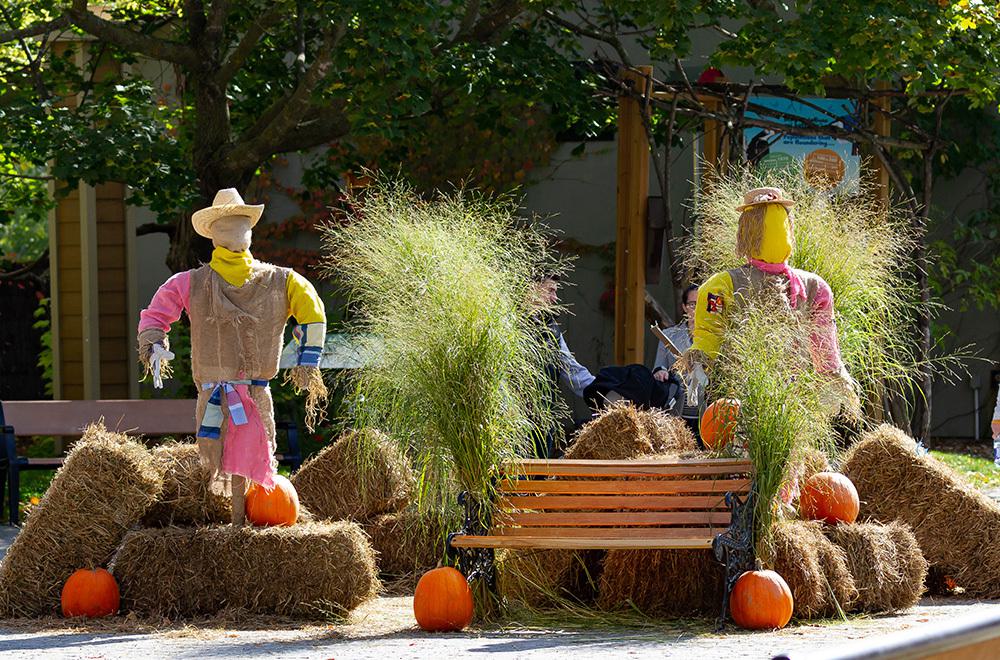
For the maintenance and construction teams, it’s the start of the “high season.” The absence of visitors during the week means that major maintenance work can be carried out on the installations and buildings, and major construction projects can get under way.
Autumn often involves a race against the clock to get as much work done as possible before winter sets in. Because some habitats are gradually being cleared out, it’s also an opportunity to bring in the machinery and add sand, refurbish a shelter, build new wooden overhead structures or apply a fresh coat of paint here and there.
It’s also the best time for carrying out the annual inspection of all the nets that delimit the habitats of many of the Zoo’s species, such as the Amur tigers and jaguars. Every mesh, every centimetre of net is meticulously examined to ensure our animals as well as our visitors’ safety! The whole process takes between 3 and 4 months; there’s definitely a lot of netting at the Zoo de Granby!
The team is also busy winterizing buildings closed during the winter months (like the ice cream stands). This means closing the Amazoo water park (emptying the pools, servicing the pumps and filtration systems, etc.) and putting certain rides on pause. For sure, our teams aren’t at a loss of work to accomplish!

Inspection des filets
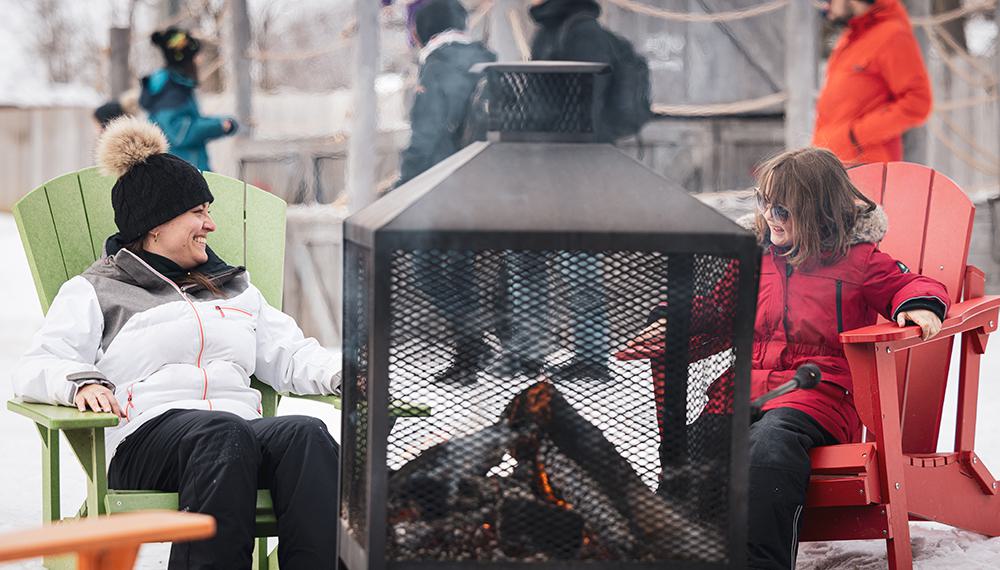
Visitor Services Planned to the Last Detail!
The leaves haven’t yet all fallen, but the customer services team is already in winter mode!
Among other things, we’re planning snow clearance operations based on the routes taken by visitors during the winter zoo season, and rearranging the street furniture (benches, picnic tables, etc.) as required.
Play areas are prepared for the change of season, and sign postings are planned to ensure that accessible areas are properly differentiated from those that are closed off during the season.
Finally, public spaces and pathways are enhanced with the installation of fireplaces and play equipment for the whole family!
The Zoo will be open for its winter season starting on December 26. Meanwhile, there are 3 great weekends ahead to enjoy our autumn program while admiring the colours and Halloween decorations from now until October 29!
